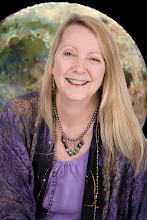
So, this is the beginning of fall, huh? Autumn Equinox, the official first day. Fall in Texas is different: we don’t have one. In other parts of the country, golden sunlight casts its fading warmth on the red and yellow oaks of autumn, lakes are adorned with bobbing flotillas of migrating fowl. Tractors cut vast fields of hay, farmers plow harvest stubble to fallow until the spring.
We define fall in a different way. It’s when the evening lows are no longer in the 80s. Rain changes from the mad thrashing thunderstorms of summer – that is, if we get rain in the summer — to the enveloping downpour that comes with cold fronts from the north. We tentatively emerge from our air-conditioned dens to see the sky, once a pale bleached blue, regain its deeper hue. Lawns come to life, changing to emerald green from parchment brown.
We slip into the leeward side of the seasons as the autumnal equinox arrives. Leaving the suspended state of summer, with its forever young feeling of long days, sunshine and growth, we rejoin the awesome river of change that is life. Fall is about falling, about tumbling from the high point of summer, returning to the flow, about releasing and letting go. It’s about believing that the way to leave a mark on this life is not through accumulating and controlling, to own or to possess, but through creating and releasing, from the children we raise to the works of art we create.
For us, this giving without obligation is a philosophy we come to after much consideration and beating up on our egos. To the natural world of plants and animals, bugs and fish, it is simply the way of life. Leaves separate from the trees, cascade to the ground and return into the Earth. Animals die and decay, their bodies fertilize plants that feed their children. Everything returns to the source, knowing it will return. The circle of life, the cycles of life. Regeneration through generations.
Autumn Equinox is the moment of equilibrium just before this fall. The Earth in its wobbly path through the cosmos is for a brief time spinning perfectly upright and the Sun is shining straight on at the equator—hence the name, equinox. Instead of leaning into the Sun like it does in summer or leaning away in winter, just a for a moment the Earth is balanced -- no, not so much that an egg placed on its pointed end will stand upright, like a lot of folks try to do on this day -- but enough to give us a metaphor to live by.
This momentary drift into balance and back out again is a reminder of how tentative life can be, how fleeting and how sweet. It reminds us to seize those moments, carpe diem, and live them fully, to embrace this life and all its mortality, to never go to bed angry at someone you care about. So we take this special day before we tip towards winter and the waning days of the seasonal year to celebrate the connections we make in this brief time together and honor the abundant gifts the Earth gives to us so willingly.



